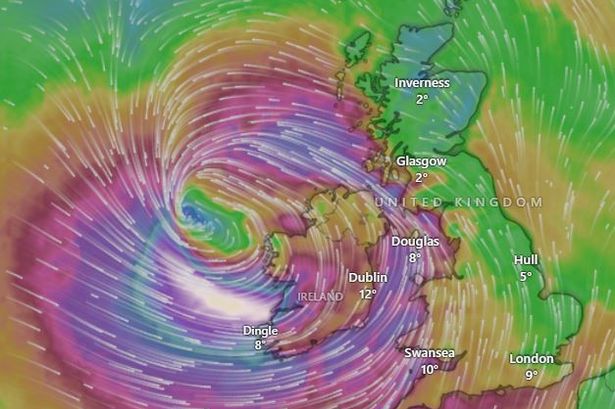The United Kingdom is on high alert as it braces for the impact of a powerful and potentially devastating storm system, predicted to be one of the worst in recent memory. This follows the issuance of a rare red alert in neighboring Ireland, prompting a nationwide lockdown as authorities grappled with the storm’s initial onslaught. The storm, characterized by its intense winds, torrential rainfall, and the potential for widespread flooding and structural damage, has prompted emergency services across the UK to mobilize and issue warnings to the public. Coastal communities are particularly vulnerable, facing the threat of exceptionally high tides and destructive storm surges. The storm’s trajectory indicates a path directly towards the western and northern regions of the UK, with concerns that its intensity may not significantly diminish as it moves inland.
The storm’s development can be attributed to a confluence of meteorological factors, including a deep area of low pressure intensifying rapidly as it tracks across the North Atlantic. This rapid intensification, often referred to as “bombogenesis,” occurs when the central pressure of a storm drops dramatically within a short period, leading to an explosive strengthening of the system. The resulting high winds, reaching hurricane-force in some areas, pose a significant risk to infrastructure, including power lines, trees, and buildings. The heavy rainfall associated with the storm also creates a heightened risk of widespread flooding, particularly in areas with already saturated ground. The combination of strong winds and heavy rain increases the likelihood of downed trees and power outages, potentially leaving communities isolated and without essential services.
Preparations for the storm are underway across the UK, with emergency services coordinating responses and advising residents to take necessary precautions. These precautions include securing loose objects outdoors, stocking up on essential supplies, and avoiding unnecessary travel during the height of the storm. Coastal communities are being urged to evacuate low-lying areas susceptible to flooding and storm surges. Schools and businesses in affected regions are also considering closures to ensure the safety of students and employees. The government has activated its emergency response protocols, ensuring that resources are readily available to support affected communities.
The potential impact of this storm on the UK cannot be overstated. Beyond the immediate threat to life and property, the storm could disrupt critical infrastructure, including transportation networks, power grids, and communication systems. The economic consequences of such disruptions could be substantial, particularly for businesses forced to close and individuals unable to work. The agricultural sector is also vulnerable to the storm’s impact, with potential damage to crops and livestock. The long-term recovery process could be protracted and complex, requiring significant investment in rebuilding infrastructure and supporting affected communities.
The UK’s experience with previous storms underscores the importance of preparedness and resilience in the face of such extreme weather events. While the exact trajectory and intensity of this particular storm remain subject to some uncertainty, the potential for significant disruption is undeniable. The focus now is on minimizing the risk to life and property, ensuring that emergency services are adequately resourced, and supporting communities in their preparations for the storm’s arrival. The aftermath of the storm will likely necessitate a comprehensive assessment of the damage and a concerted effort to rebuild and recover.
The current storm serves as a stark reminder of the increasing frequency and intensity of extreme weather events, potentially linked to climate change. As the planet continues to warm, the likelihood of such devastating storms becomes more pronounced. This underscores the urgency of addressing climate change through mitigation efforts to reduce greenhouse gas emissions and adaptation strategies to enhance resilience against the impacts of a changing climate. Investing in robust infrastructure, improving early warning systems, and strengthening community preparedness will be crucial in minimizing the impact of future extreme weather events and safeguarding communities from the escalating threats posed by a warming world.














